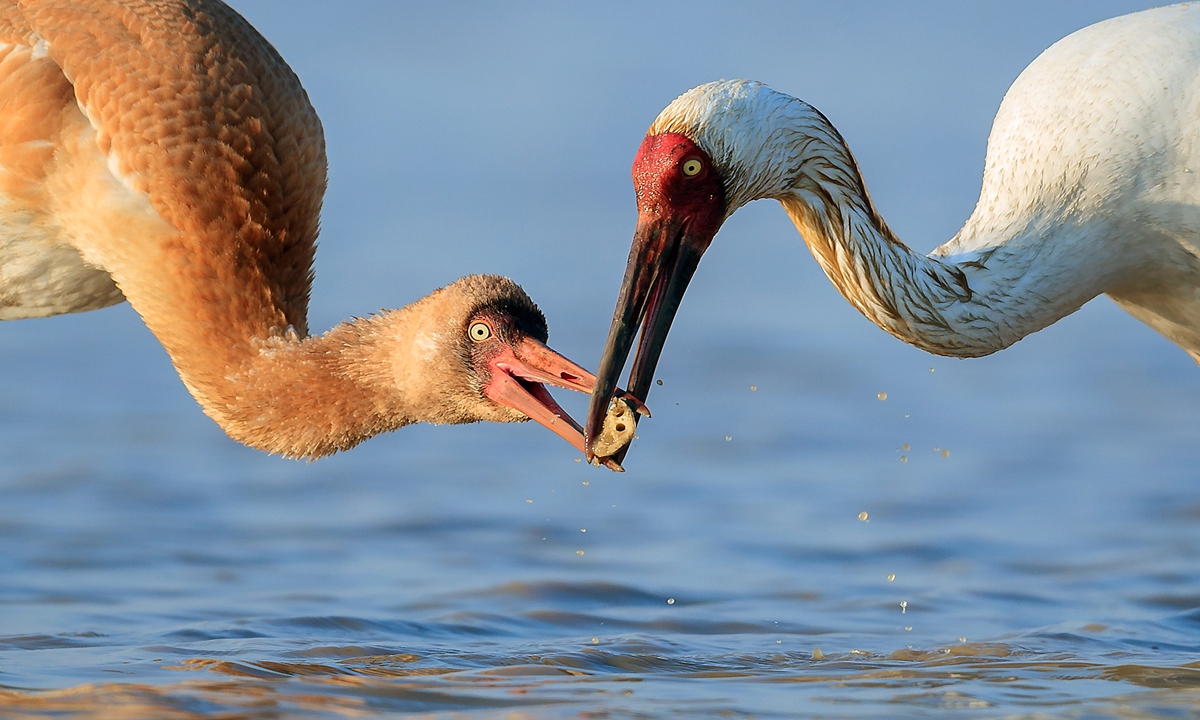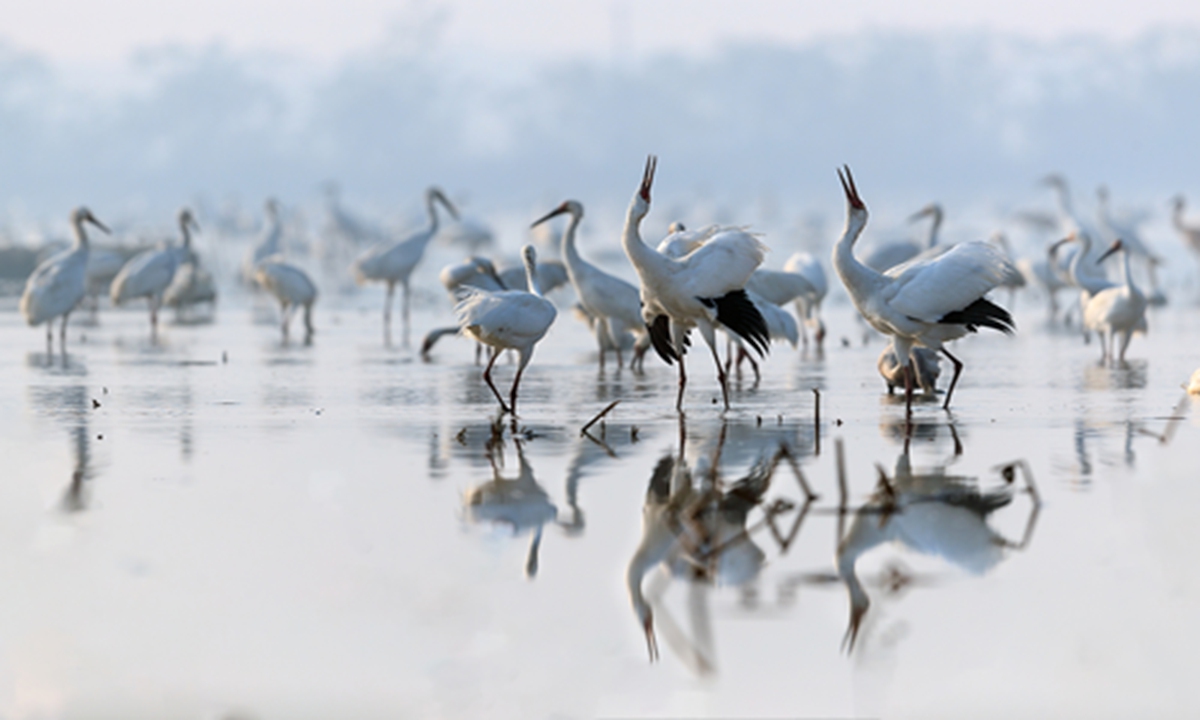High water levels at major wintering bird habitat in Jiangxi Province spells trouble for endangered white cranes
By Ji Yuqiao Source: Global Times Published: 2020/7/16 18:08:40

Baby white crane (left) and adult white crane (right) Photo: courtesy of Zhou Haiyan
As China's largest freshwater lake and Asia's largest wintering migratory bird habitat, Poyang Lake welcomes more than 600,000 water birds each year to spend the winter there. However, high water levels resulting from recent flooding have led experts to predict that overwintering birds will be impacted by a food shortage.
The reserve administration for Poyang Lake in East China's Jiangxi Province and some nongovernmental organizations have begun considering measures to reduce any negative impact on water birds, especially on the white cranes, an endangered species recognized by the International Union for Conservation of Nature, an expert on water bird conservation told the Global Times on Thursday.
Poyang Lake has remained at a high water level above Level One of Alert for several days by now, a situation that is sure to impact 46 million Jiangxi residents, as well as the more than 600,000 wintering birds that will fly to the lake.
Among the different kinds of birds that visit the lake, the endangered white cranes have sparked concern among experts. In recent years, the lake has become this species' last major wintering site following the loss of two other sites. Currently, the number of wintering white cranes in the lake region exceeds 98 percent of the total world population.
"White cranes are highly dependent on water levels as they need to stand in the water to find food," Zhao Xinru, a bird expert and professor at Beijing Normal University, told the Global Times on Thursday.
Zhao said that birds are loyal to their first choice of habitats, but if the water surface of the lake becomes too high, they abandon a place to look for another habitat with shallow water.
"The process will consume more of the birds' energy," Zhao noted, pointing out the potential dangers birds face during migrations.

White cranes Photo: courtesy of Zhou Haiyan
In flood years, for example, after the summer floods in 1998 and 2000, only 741 and 382 white cranes wintered on Poyang Lake, while around 2,000 white cranes wintered there during non-flood years, The Beijing News reported.
A shortage of food is one major problem water birds face whenever the lake's water level breaks 17.5 meters deep as various types of submerged plants that are also major sources of food for water birds are unable to stay alive, Zhou Haiyan, an expert on water birds and founder of China's only nongovernmental conservation area for white cranes, told the Global Times.
"The high water levels lasting for so many days will have a great impact on the plant growth in the lake and lead to a shortage of food for migratory birds this winter," Zhou said.
However, she added that the problem should not be too serious as the reserve puts food in the lake during years with natural disasters and scattered rice grains left over from harvests on farmland around the lake can also provide alternate food sources for the birds, Zhou said.
Zhou built the reserve for white cranes, only 100 meters away from the lake shore, in 2017 to provide shelter for the endangered birds in the winter.
"The reserve has increased in size by around 696,666 square meters and we have planted lotus root and other submerged plants, which is the preferred food for white cranes. This can help relieve the difficulties they face this winter," she noted.
RELATED ARTICLES:
Posted in: WHAT’S ON